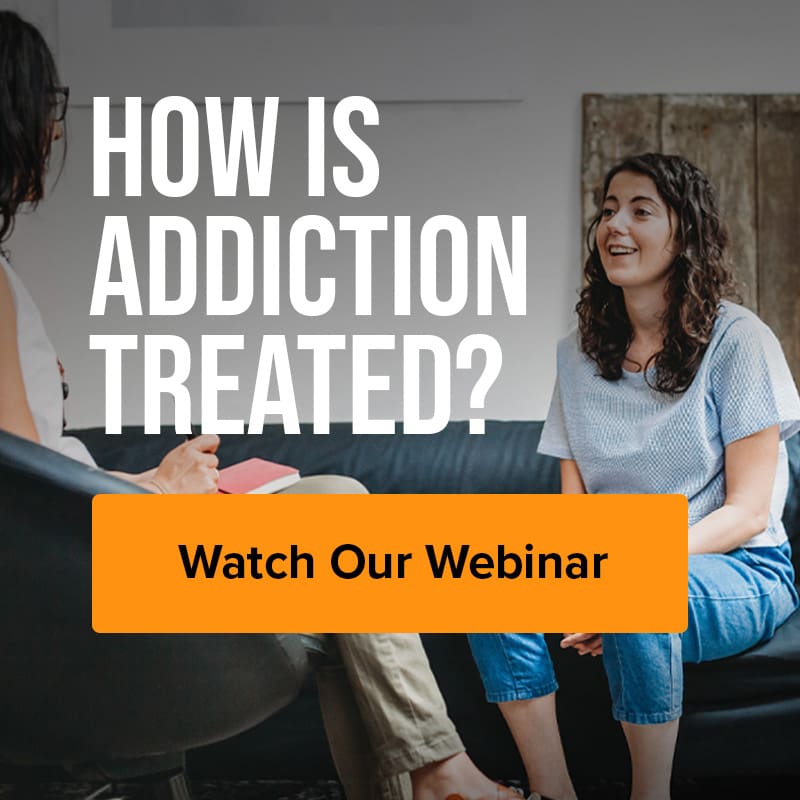Understanding the differences between alcohol use disorder and opioid use disorder requires understanding how each substance affects the body. Alcohol and opioids have different short- and long-term effects, and differences in withdrawal symptoms, psychotherapy, pharmacotherapy (treatment using medication), and how people overdose. As a result, the best practices for treating opioid use disorder differ from best practices for treating alcohol use disorder.
What Is Alcohol Use Disorder?
Alcohol use disorder is widespread amongst Canadians. Approximately 7.2 million Canadians are considered heavy drinkers. Heavy drinking, according to Statistics Canada, is defined for men as consuming five or more, and for women four or more, alcoholic beverages in one day, at least once per month during the previous year.[1]
Alcohol use disorder (AUD) occurs at the high end of the spectrum of drinking behaviours: abstinence, low-risk drinking, at-risk drinking, and alcohol use disorder.
There are 11 generally accepted criteria for identifying when an individual has an AUD:[2]
- Alcohol is consumed in larger amounts or over longer periods of time than intended
- Repeated unsuccessful attempts to reduce consumption
- Large amounts of time spent obtaining or consuming alcohol, or recovering from consuming it
- Strong alcohol cravings
- Recurrent consumption resulting in failure to fulfill major responsibilities
- Continued consumption despite alcohol-related social or interpersonal problems.
- Reduction of major activities because of alcohol
- Repeatedly drinking in situations or activities where alcohol intoxication is dangerous
- Continued consumption despite being aware that alcohol is physically or psychologically harming them
- Tolerance: needing to drink more to achieve the same effects, or diminished effects at the same level of alcohol consumption
- Withdrawal: symptoms when one does not drink, such as tremors, seizures, sweating, and anxiety, that are relieved by drinking
Risk Factors for Alcohol and Opioid Use Disorders
The development of substance use disorders, such as alcohol use disorder or opioid use disorder, can stem from a number of factors. These include:
- Genetic Predisposition: A family history of addiction can significantly increase an individual’s risk of developing a substance use disorder.
- Environmental Influences: Stressful life circumstances, exposure to trauma, and the social environment in which one lives can contribute to increased vulnerability.
- Underlying Mental Health Conditions: Pre-existing conditions like depression, anxiety, or PTSD (post-traumatic stress disorder) may heighten the likelihood of turning to substances for self-medication and ultimately, developing an addiction.
It’s important to understand that the interaction of these factors is complex. While not everyone facing these risks will necessarily develop a substance use disorder, awareness of these risks can be a first step towards prevention and seeking help when needed.
What Is Opioid Use Disorder?
Opioid hospitalization rates have been increasing, with 17 Canadians hospitalized every day for opioid poisoning in 2017.[3] Opioids such as fentanyl, oxycodone, morphine, and codeine can be obtained with a prescription or through black market sources. Either way, opioid use can result in harmful consequences, such as addiction, poisoning, and death.
When opioids are used beyond their prescribed doses, they can cause feelings of intense pleasure or euphoria, but can also lead to fatal overdose. Opioid use disorders are categorized by 13 signs, symptoms, and behaviours that show a person is both physically and psychologically dependent.[4]
- Opioids are used in larger amounts or over longer periods of time than intended
- Repeated unsuccessful attempts to reduce use
- Large amounts of time spent obtaining or using opioids, or recovering from using them
- Strong opioid cravings
- Recurrent use resulting in failure to fulfill major responsibilities
- Continued use despite opioid-related social or interpersonal problems
- Reduction of major activities because of opioids
- Repeated use in situations or activities where opioid intoxication is dangerous
- Tolerance: needing to use more to achieve the same effects, or diminished effects with the same quantity of opioids
- Crushing, snorting, smoking, or injecting opioids
- Running out of prescription medications before the refill date
- Acquiring opioids through many sources (e.g., prescriptions from two or more doctors, or both a prescription and illicit opioids)
- Showing signs of opioid intoxication (e.g., nodding off, pinpoint pupils)
Risk factors for developing an opioid use disorder include both psychological and physical factors such as, personal or family history of substance use disorders, history of pre-adolescent sexual abuse, and history of psychiatric problems.
What Are the Effects of Alcohol Use Disorder?
Alcohol use disorder (AUD) can cause a range of short- and long-term physical and psychological effects. In some cases, individuals with an AUD may be willing to suffer the mild or severe results associated with heavy drinking in order to experience the temporary feelings of dissociation or euphoria.
The liver is able to metabolize approximately one drink per hour. Whenever drinking occurs at a faster rate than alcohol is metabolized, alcohol will accumulate in the body and a person will become intoxicated. Short-term effects of intoxication can include mood swings, raised blood pressure, and trouble concentrating.
Long-term effects of alcohol use disorders (AUD) have more serious risks. Consumption of one-to-two drinks per day can increase the risk of developing certain cancers. Three-or-more drinks per day can increase the risk of high blood pressure, stroke, and heart problems. Heavy drinking can cause appetite loss, vitamin deficiencies, and infections. Additional long-term effects include irritation to the lining of the stomach, which can be painful and potentially fatal. Increased risk of temporary imbalances in body chemistry, irregular heartbeat, acute hepatitis, and memory loss are also associated with AUDs.
What Are the Effects of Opioid Use Disorder?
The short-term effects of opioid use include the immediate “high” that follows faster-acting opioids. The length of this feeling varies depending on the particular opioid that is used. Additional short-term effects may include dizziness and confusion, constipation, and nausea and vomiting.[5]
Even when prescribed to treat a specific condition, such as chronic pain, the long-term side effects of opioid use can be detrimental to one’s health. The long-term effects of opioid use disorders include increased tolerance, liver damage, infertility in women, worsening pain (known as “opioid-induced hyperalgesia”), and life-threatening withdrawal symptoms in babies born to mothers taking opioids.
Signs and Symptoms of Addiction
While the specific manifestations of alcohol use disorder and opioid use disorder may differ, both addictions share common indicators. Recognizing these signs can be crucial in identifying a problem and seeking appropriate help. Key signs and symptoms of addiction include:
- Loss of Control: Inability to consistently limit or manage substance intake, often consuming more than intended or for longer periods. This might manifest as starting to drink earlier in the day or being unable to stop once started.
- Compulsion: Intense cravings for the substance and a preoccupation with obtaining and using it. This can involve spending significant time and energy focused on getting the substance, using it, and recovering from its effects.
- Negative Consequences: Continued use despite the substance causing significant disruptions in personal relationships, work, education, or other important life areas. This could appear as neglecting responsibilities, strained relationships, or performance issues.
- Tolerance: Needing increased amounts of the substance to achieve the same effects, or experiencing diminished effects with continued use at the same level.
- Withdrawal: Experiencing physical and psychological withdrawal symptoms when significantly reducing or stopping substance use. These symptoms can be specific to the substance and range from mild discomfort to severe medical complications.
- Changes in Behavior: Individuals struggling with addiction may exhibit noticeable personality shifts, including increased secrecy, mood swings, irritability, or defensiveness.
How Do Alcohol Use Disorder and Opioid Use Disorder Differ?
The clinical differences between alcohol use disorders and opioid use disorders can be seen when comparing withdrawal symptoms, psychotherapy, pharmacotherapy (treatment using medication), and how people overdose.
Alcohol withdrawal
When an individual with alcohol use disorder stops drinking, withdrawal symptoms usually start in 6-to-12 hours, and peak somewhere between 24 and 72 hours. Withdrawal symptoms and cravings usually last 3-to-10 days, but can sometimes last longer. Withdrawal symptoms include the following:
- Tremors (the most common symptom)
- Sweating
- Vomiting
- Anxiety
- Heart beating too fast (tachycardia)
- High blood pressure (hypertension)
- Abnormal, uncoordinated movements during activities that require fine motor control
Opioid withdrawal
When an individual with opioid use disorder stops using opioids, withdrawal symptoms usually start in 6-to-12 hours for fast-acting opioids, and around 30 hours for long-lasting opioids. Withdrawal symptoms peak at around 72 hours after the last dose. Withdrawal symptoms are uncomfortable, but not usually life threatening, and include the following:
- Agitation
- Anxiety
- Tremors
- Muscle aches
- Hot and cold flashes
The intensity of withdrawal symptoms depends on the type of opioids an individual was taking, the dosages they were taking, and the speed of withdrawal.[6]
Psychotherapy for alcohol use disorder
Various types of psychotherapy have been used to support recovery from alcohol use disorder. Cognitive behavioural therapy (CBT), motivational interviewing (MI), and interpersonal therapy (IPT) are all effective techniques that can be used to support the recovery process.[7]
Psychotherapy for opioid use disorder
Cognitive behavioural therapy (CBT) is also an effective form of psychotherapy for treating opioid use disorder. Additional therapeutic methods that can be used during the recovery process including contingency management and community reinforcement.[8]
- Contingency management creating a system of rewards (e.g. tokens or vouchers) that individuals receive for achieving recovery-related goals.
- Community reinforcement is redesigning an individual’s lifestyle, such that their daily activities are healthy, and drug-free. Non-drug-related social activities become important foundations through which new, abstinent communities and support systems are formed.[9]
Pharmacotherapy for alcohol use disorder
Pharmacotherapy is the process of prescribing one or several medications to address a medical condition.
Prescription medication has been shown to decrease cravings and rewards associated with consuming, which should facilitate the process of recovery and abstinence. However, pharmacotherapy alone is minimally effective at treating alcohol use disorder (AUD).[10] Studies evaluating the use of medications to treat alcohol use disorder have shown limited and insufficient evidence to draw conclusions about the benefits of pharmacotherapy for treating AUDs.
Pharmacotherapy for opioid use disorder
Prescription medications are helpful for individuals recovering from opioid use disorders. They can block the “high” that normally results from opioid use, as well as prevent overdose. Pharmacotherapy alone is moderately effective for treating opioid use disorders.[11] The Food and Drug Administration (FDA) has approved three medications for treating opioid use disorders: buprenorphine, naltrexone, and methadone. These medications are used to detox and stabilize individuals with opioid use disorders.[12]
Alcohol overdose deaths
Alcohol overdose occurs when blood alcohol content (BAC) exceeds 0.40. At this BAC, physiological functions controlled by the brain, such as breathing, heart rate, and body temperature regulation, begin to shut down. Individuals with AUDs who overdose on alcohol rarely die from it. Overdose deaths from alcohol after relapse are also rare.
Opioid overdose deaths
Opioid overdoses can cause death due to respiratory arrest, asphyxiation, cardiac arrhythmia, circulatory collapse, rhabdomyolysis, and kidney failure.
- Respiratory arrest means that an individual stops breathing or is not breathing effectively enough to get sufficient oxygen.
- Asphyxiation can occur during eating or drinking when foreign material is inhaled into the airway and prevents effective breathing.
- Cardiac arrhythmia is also known as an irregular heartbeat that causes the heart to beat either too fast (tachycardia) or slow (bradycardia).
- Circulatory collapse is extreme exhaustion and depression of the circulatory system, including the heart and peripheral arteries and veins.
Overdose deaths for individuals with opioid use disorders are common and their frequency is increasing. In 2017, approximately 11 Canadian lives were lost each day due to opioid overdose.[13]
Overdose death rates are higher for individuals who relapse following a period of abstinence—for example, after detox or treatment. A period of abstinence lowers a person’s tolerance for opioids, and relapsing individuals are often unaware of this. As a result, they may attempt to use dosages similar to that which they previously used—which frequently causes an overdose.
What This Means for Treating Opioid Use Disorder
Individuals who relapse and start using opioids again have higher overdose rates, compared to individuals who currently have opioid use disorders. This suggests that psychotherapy is an essential part of treatment in addition to pharmacotherapy, to minimize the risk of relapse and overdose. Also, special attention should be given, and additional treatment options considered, for individuals who are at high risk for opioid overdose. The following attributes and behaviour are associated with higher opioid overdose risk:[14]
- Male
- Less than 25 years old
- Inject drugs
- Use other drugs such as cocaine, alcohol, and benzodiazepines
- Have been arrested, other than for drug possession
- Have a number of treatment attempts in the past 12 months
- Less than six months of abstinence following their last treatment
- Have overdosed before
Best practices include assessing readiness to change, and if the individual is ready, enrolling in a comprehensive residential treatment program. If not, the most viable option may be exploring other treatment options, and appointing a friend or family member to supervise the recovery process and hold the individual accountable. After treatment, participation in aftercare is also critical for ensuring successful long-term recovery, and for minimizing the probability of relapse and overdose.
We Can Help You
If you would like to learn more about the addiction and mental health treatment programs provided by EHN Canada, enrol yourself in one of our programs, or refer someone else, please call us at one of the numbers below. Our phone lines are open 24/7—so you can call us anytime.
References
[1] Canadian Tobacco, Alcohol and Drugs Survey, 2017. (2018). Retrieved 9 October 2019, from https://www150.statcan.gc.ca/n1/daily-quotidien/181030/dq181030b-eng.htm
[2] Kahan, M. (2017). Management of alcohol use disorders: A pocket reference for primary care providers. [ebook] Women’s College Hospital, p.5. Retrieved 9 October 2019, from https://www.womenscollegehospital.ca/assets/pdf/MetaPhi/2017-12-19%20PCP%20alcohol%20guide.pdf
[3] Latest data on the opioid crisis | CIHI. (2019). Retrieved 9 October 2019.
[4] Alcohol. (2019). Retrieved 9 October 2019, from https://www.camh.ca/en/health-info/mental-illness-and-addiction-index/alcohol
[5] About opioids.(2019). Retrieved 9 October 2019, from https://www.canada.ca/en/health-canada/services/substance-use/problematic-prescription-drug-use/opioids/about.html
[6] Treating opiate addiction, Part I: Detoxification and maintenance – Harvard Health. (2019). Retrieved 9 October 2019, from https://www.health.harvard.edu/mind-and-mood/treating-opiate-addiction-part-i-detoxification-and-maintenance
[7] Sack, D. (2019). Addiction Treatment: Save A Life – Prevent an OD. Presentation, EHN Bellwood Toronto.
[8] Ibid.
[9] Meyers, R. J., Roozen, H. G., & Smith, J. E. (2011). The community reinforcement approach: an update of the evidence. Alcohol research & health: the journal of the National Institute on Alcohol Abuse and Alcoholism, 33(4), 380–388.
[10] Sack, D. (2019). Addiction Treatment: Save A Life – Prevent an OD. Presentation, EHN Bellwood Toronto.
[11] Ibid.
[12] Treating opiate addiction, Part II: Alternatives to maintenance – Harvard Health. (2019). Retrieved 9 October 2019, from https://www.health.harvard.edu/mind-and-mood/treating-opiate-addiction-part-ii-alternatives-to-maintenance
[13] Canada’s Opioid Crisis (fact sheet) – Canada.ca. (2019). Retrieved 9 October 2019, from https://www.canada.ca/en/health-canada/services/publications/healthy-living/canada-opioid-crisis-fact-sheet.html
[14] Sack, D. (2019). Addiction Treatment: Save A Life – Prevent an OD. Presentation, Bellwood Health Services.




